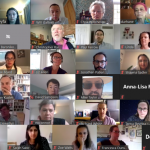Featuring the EU Commission’s new open science role, a new tool to analyse the uptake of hybrid open access publishing, and results from the European University Association’s open access survey.
EU Commission research chief secures new open science role via Science | Business
Robert-Jan Smits, one of Europe’s most senior civil servants in science policy, has changed his role at the European Commission from Director-General of Research and Innovation to special envoy on open science. His main focus will be to help make all publicly funded scientific papers and data in Europe become freely available by 2020. Smits recently remarked “I will be the ice-breaker for open access publications”.
SpringerNature to announce €7 billion initial public offering via STM Publishing News
SpringerNature, publisher of the Nature journals, has brought forward its plans to list the company on the Frankfurt stock exchange to June this year. The company, which may be valued at more than €7 billion, is likely to be accelerating its plans to reduce the risk from volatile stock markets.
Introducing the Hybrid OA Dashboard via SUB Open
A new tool built by the Göttingen State and University Library that links openly available data sets about hybrid open access has been used to analyse the uptake of hybrid open access across 3041 journals from 37 publishers between 2013 and 2017. During this time, only 2.4% of the 90 843 articles analysed were made open access.
The European University Association (EUA) releases open access survey results via EUA
The EUA has published the results of its 2016–2017 open access survey, which looked at the progress of European universities towards implementing open access policies and practices. Promisingly, of the 338 universities and higher education institutions from 39 European countries that responded, 74.6% had an open access policy or were planning to implement one in the next 12 months.
How to avoid predatory journals via MPIP
Angela Sykes, Publications Specialist at Pfizer, gives her opinion on how to address the growing problem of predatory journals and publishers, following findings that pharmaceutical companies had published in OMICS Publishing Group journals, which have been criticised for having little or no peer review. Sykes suggests that education and awareness on predatory journals, as well as the development of criteria for high-quality open access journals, are key actions that can be taken to reduce predatory publishing.






